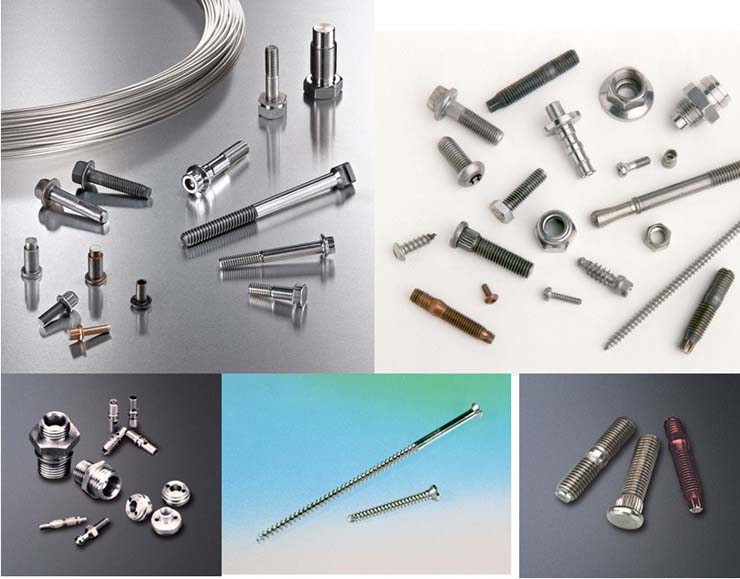Cold Forming
What Types of Parts are Good Candidates for Forming?
Forming Work usually requires a die to cut or shape the primary material, which is usually metal or plastic. Some of the most familiar parts that are made using forming are blister packs for the transparent plastic packaging of marketed items and coins and automobile body parts. The Forming Work to manufacture an automobile part is more complex and uses sheet metal and die forming, which requires two parts. One part is termed the punch, which stretches and bends the metal, and the other part is referred to as the die block, which secures the metal and also performs similar stretching and bending as the punch. The forming stage of manufacturing an automobile part is only the first step in making something like an automobile door. Bending should be differentiated from forming which it can resemble. Bending creates only straight lines, whereas forming creates a curved bend such as that found in soft drink cans. The next steps are shearing, crimping and rolling to eliminate cutting metal edges and ensure rigidity.
Designing Parts for Forming
The most important parts in forming are the punch and the die, but there are many other parts that are needed to properly manufacture a part or article. Machines and dies may be very expensive, and the quality of the end product is a direct result of the quality of the die design and the type of lubrication. Dies must be sharp, and there must be an accurate space between the punch and the die so that the edges of the produced part will adhere to required dimensions. When designing dies you must consider the proper forming process which will often be dictated by the shape and length of the metal part you wish to create. Cold forming using a punch and die renders a more exactly shaped part than extrusion, which is a similar manufacturing process.
The different types of dies that are needed to form a particular item are varied. There are coining dies to form things like an Olympic medal, for instance. A door hinge uses a curling die to roll the metal into a curve. There are forming dies that take a metal blank and bend it along a curved area. The positive end of an AAA battery is a good example of a metal part that has been formed using a forming die. While extruding is part of the manufacturing process of many metal parts, it is different from cold forming which is very similar to extruding. Extruding utilizes intense pressure from a punch to squeeze the metal into the required shape. In cold forming, the metal is squeezed, but unlike extrusion, cold forming uses the die and punch so that the finished part will take the shape of the punch. In roll forming, sheet metal is continually bent on twin sets of rollers. This method produces long parts or large quantities of parts.
Cold Forming terms:
Cold Heading:
cold forming process in which the force of the punch must exceed the material’s elastic limit to cause plastic flow
elastic limit = yield strength
forging operation without the heat
Cold Extrusion:
decreasing the diameter of the blank by pushing it through a smaller hole
reduces size without yield loss
Cold Forming:
generic term describing the combination of cold heading with cold extrusion
Cold Forming Process:

Cold Forming Parts:


 Sand Casting
Sand Casting Brake Disc Series
Brake Disc Series Brake Drum Series
Brake Drum Series Differential Cases
Differential Cases Featured Cases
Featured Cases Investment Casting
Investment Casting Cylinder End Mounts
Cylinder End Mounts Shaft Coupling
Shaft Coupling Cast Steel cable Protector
Cast Steel cable Protector Home Hardware Accessories
Home Hardware Accessories Featured Cases
Featured Cases Precision Machining
Precision Machining Hydraulic Piston
Hydraulic Piston Flange
Flange Featured Cases
Featured Cases Precision Stamping
Precision Stamping Featured Cases
Featured Cases Precision Forging
Precision Forging Featured Cases
Featured Cases Die Casting
Die Casting Featured Cases
Featured Cases Gravity casting
Gravity casting Featured Cases
Featured Cases Cold Forming
Cold Forming Featured Cases
Featured Cases Magnetic Assemblies
Magnetic Assemblies NdFeB Magnets
NdFeB Magnets Engineered Assemblies
Engineered Assemblies Magnetic Separators
Magnetic Separators Attraction Kits
Attraction Kits Powder Metal and Sintered Part
Powder Metal and Sintered Part Fokli Sourcing
Fokli Sourcing






